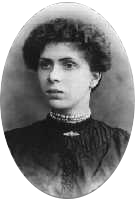The Women Incendiaries [of the Paris Commune] by Edith Thomas [Review]
This book is not just about the pétroleuses, those semi-mythical communard firestarters, it’s actually a women’s history of the Paris Commune. As history from below, we get less committee meetings or military strategy and more of daily life: ‘Women’s politics begins with the distribution of essential goods, the just administration of things.’ (p37.) It is an excellent introduction to the history of the Commune. Have women played lesser roles in other revolutions – or have we just not heard of them?
Thomas writes excellent narrative history, with some acid sarcasm for sexism (whether from radicals or reactionaries) and an eye for contemporary prejudices: ‘We know the process: physical defects (including freckles) indicate a corresponding moral ugliness, and became a sign of predestination to evil. In the same way, but conversely, people like [Maxime] Vuillaume and [Jules] Vallès never saw anything but beautiful, young, joyful, healthy girls among the Commune fighters – which is equally absurd.’ (p157)
Inevitably, Louise Michel plays a large part in the story of the revolt which defined her life, both by what happened and how she dedicated herself to the Commune’s memory. While Michel’s memoirs are available in an edited form (The Red Virgin), Thomas also quotes freely from her La Commune (1898, not available in English). The unknown women of the Commune are also given their due, from Adèle Desfosses, fighter with the 238th Battalion of the National Guard, who had looted a stuffed otter (p184), to Florence Wandeval: at her trial ‘She was said to have been heard saying, “I’ve just set the f… Tuileries on fire. Now a king can come; he’ll find his palace in ashes.”’ (p157) Buildings were burnt by communard fighters as a defensive tactic, and even for revenge. But for the vengeful bourgeois, the spectre of the pétroleuse became the excuse for mass murder of communard women during the ‘bloody week’ after the Commune’s fall. The fate of hundreds of working class Parisian women in this frenzied repression will have to be represented by the fate of one: ‘At the corner of the rue de Rivoli and the rue Castiglione, a crowd gathered around a women who had just been arrested by two artillery-men. She was accused of having thrown a bottle of petroleum at the Ministère des Finances, which had been burning for several days already. Two gendarmes beat her to death.’ (p141, quoting Lissagaray’s Huit Journées de Mai Derrière les Barricades p97)
In her final chapter Thomas attempts to justify her history of the women of the Commune: ‘history is composed of individuals, whose essential natures are difficult to grasp. Good or bad, as Diderot would have said, cowardly or brave, who knows? We can try to grasp them only through their actions, and they constantly elude us, for their actions are ambiguous and capable of various – and contradictory – interpretations. Nonetheless, “mass movements” are achieved by men and women, each one unique, each one different. Angels and devils, models of virtues and harpies, all rub elbows in the crowds of the Commune, no more and no less so than in the courts of kings. The historians who lean toward sociology, of course, are interested only in the totality. For my own part, I have tried to do something else – probably not entirely successfully: to break up the masses into their elements, to reach the individual cells that compose them. The documents are incomplete, sketchy, and inadequate. I have come across names and actions, but who were Elizabeth Rétiffe, Eugénie Suétens, Eulalie Papavoine – those humble women hurled into a great cause? In the end, no one will ever know.’ (p204) But this is too modest. Even if we will never know everything, we know them – and the Commune itself – better for her work.
The Women Incendiaries by Edith Thomas. Secker & Warburg, 1967.
Subjects:
Similar items
- Barker, John. Thomas Pynchon's "Against the Day" [Review].
- Michel, Louise and Luc Nemeth. Louise Michel's First Article in Le Libertaire (November 1895).
- NOT the bulletin of the Kate Sharpley Library, No.6 March 2021.
- KSL: Bulletin of the Kate Sharpley Library No. 106, September 2022.
- Swede, Oscar. Tom Keell.
